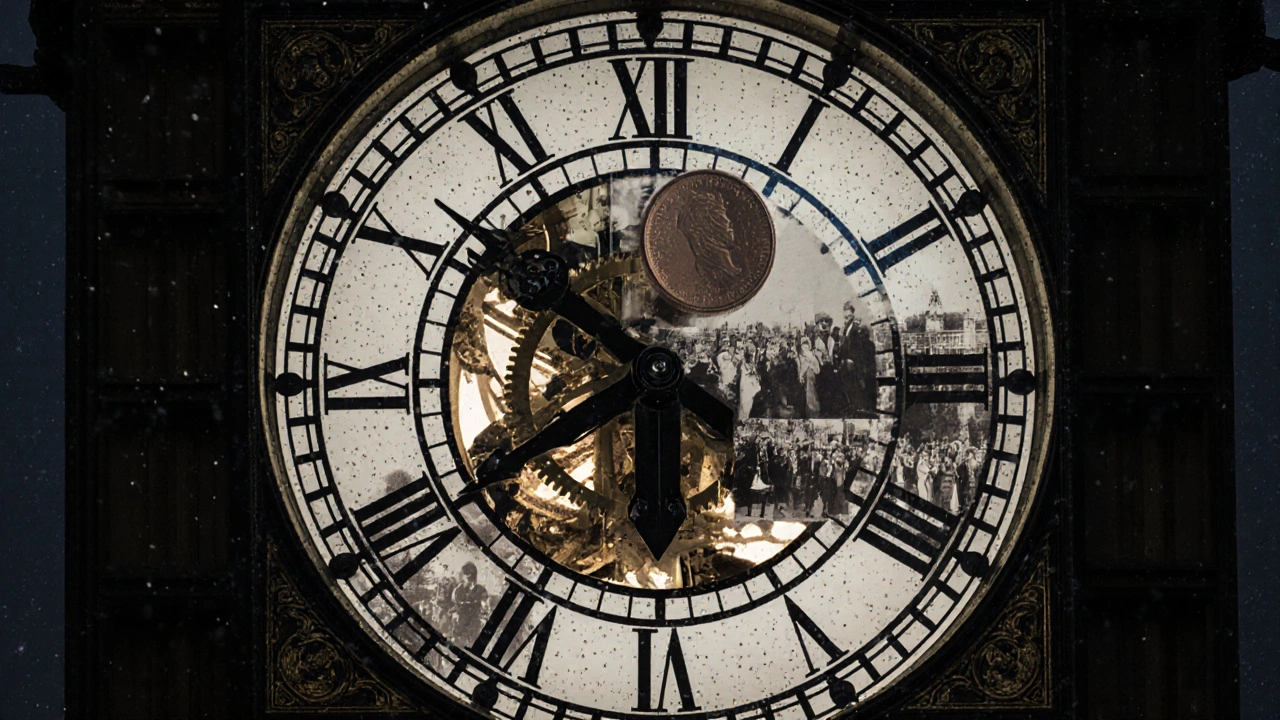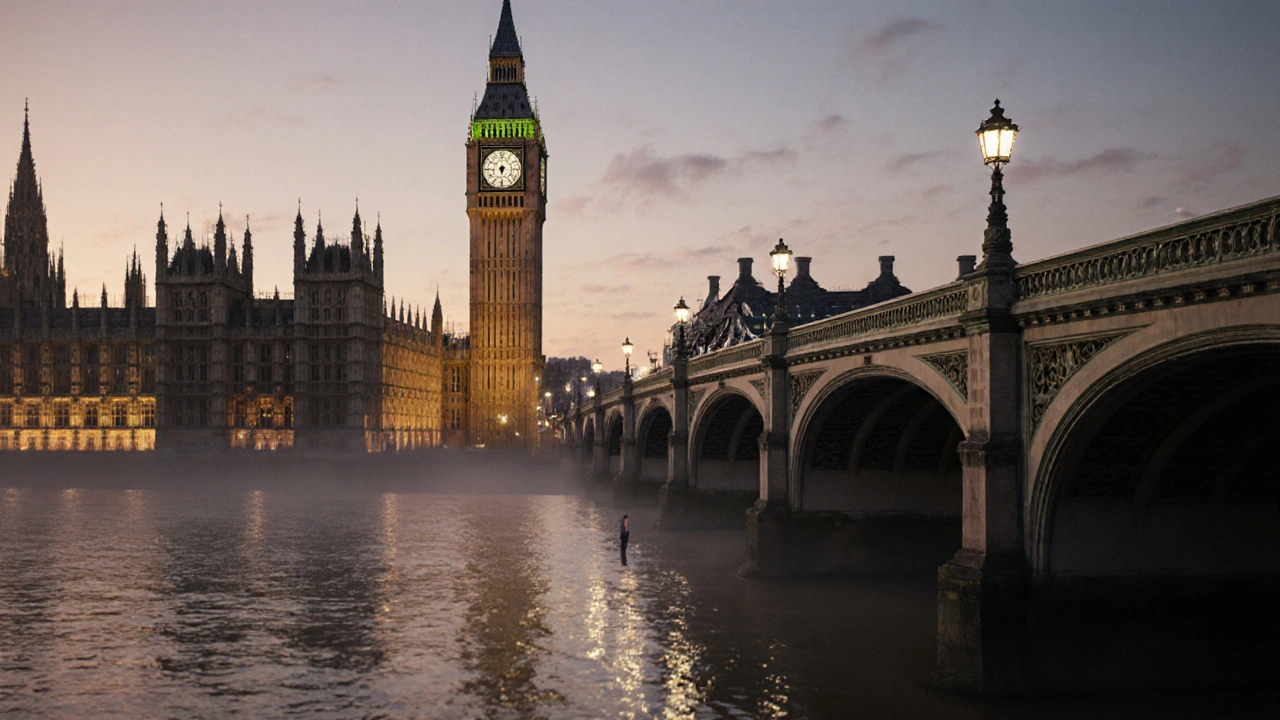Big Ben doesn’t actually exist. At least, not the way most people think. The name everyone uses for the iconic clock tower is really just the nickname of the 13.7-ton bell inside. The tower itself? It’s called the Elizabeth Tower. And right next to it, stretching along the River Thames, is the Houses of Parliament - a sprawling, 1,100-room palace of politics wrapped in stone, spires, and centuries of history. This isn’t just a postcard. It’s a living piece of Britain’s soul.
Why Gothic Architecture Still Matters Today
The Houses of Parliament weren’t always this way. After a fire destroyed most of the old palace in 1834, the British government held a competition to rebuild it. Over 90 designs were submitted. The winner? Charles Barry, with help from Augustus Pugin - a man obsessed with medieval Gothic style. They didn’t just want a new building. They wanted to revive the spirit of England’s past. Gothic wasn’t just pretty. It was political. It signaled tradition, stability, and divine order - everything the modernizing 19th century feared losing.
Today, that choice still shapes how we see power. The pointed arches, flying buttresses, and intricate tracery aren’t just decoration. They’re engineering. The tower’s 312-foot height was designed to dominate the skyline, visible from anywhere in Westminster. The 282 stained-glass windows? Each one tells a story - saints, kings, and parliamentary milestones. Even the gargoyles? They’re not just scary faces. They’re functional drains, carved to look like mythical beasts.
Walk around the building on a sunny day. Look up. Notice how every column, every finial, every carved leaf has been hand-chiseled. No two are exactly alike. That’s the heart of Gothic: craftsmanship over mass production. It’s why restoration teams still use 19th-century tools today. Modern machines would damage the stone. Human hands, guided by generations of knowledge, are the only way to preserve it.
Big Ben: More Than a Clock
Big Ben chimes every hour. But here’s what most tourists don’t know: it’s not always on time. The clock mechanism, designed by Edmund Beckett Denison in 1854, runs on gravity and pendulum. A stack of old pennies sits on the pendulum to fine-tune it. Add one penny? The clock gains 0.4 seconds per day. Remove one? It loses the same. That’s how they keep it accurate to within two seconds.
During World War II, the clock kept ticking even as bombs fell on London. The only time it ever stopped? In 1976, when a mechanical failure forced a 26-hour shutdown. In 2017, it fell silent again - this time for a four-year restoration. Workers replaced the clock faces, cleaned the brass, and rewired the chimes. When it rang again on New Year’s Eve 2021, the sound echoed across the city like a promise: Britain was still here.
Big Ben doesn’t just tell time. It marks moments. The chimes played during royal weddings, state funerals, and the end of World War II. In 2012, it rang 100 times for the Queen’s Diamond Jubilee. Each chime represented a year of her reign. That’s not engineering. That’s memory made audible.

How to Take a Tour of the Houses of Parliament
You can’t just walk in. The Houses of Parliament are still the working heart of the UK government. But the public can tour it - if you know how.
Here’s how it works:
- Book through your local MP. If you live in the UK, contact your Member of Parliament. They get a limited number of tickets each month and can reserve them for constituents.
- If you’re from outside the UK, book via the UK Parliament website. Tours are offered in English and other languages, but tickets sell out fast - sometimes weeks in advance.
- Choose your tour type. There are two main options: the standard 75-minute guided tour, or the 90-minute “Behind the Scenes” tour, which includes the House of Commons and House of Lords chambers, the Central Lobby, and Westminster Hall.
- Arrive 20 minutes early. Security is tight. No large bags, no liquids, no selfie sticks. You’ll pass through an airport-style scan.
- Wear comfortable shoes. You’ll climb 200+ steps. No elevators in most areas.
Pro tip: Book early in the week. Tuesdays and Wednesdays are quieter. Weekends? Crowded. You’ll see more tourists than MPs.
What You’ll See Inside
Walk into Westminster Hall - the oldest part of the building, dating back to 1097. It’s where kings were tried, where Winston Churchill lay in state, and where modern parliaments still swear oaths. The roof? A single wooden arch spanning 20.7 meters - the largest medieval timber roof in Northern Europe. No nails. Just mortise and tenon joints.
The House of Commons is where debates happen. The green leather benches are arranged in two rows, facing each other. Why? So MPs can shout across the aisle. The Prime Minister sits on the front bench, right in front of the Speaker’s chair. The opposition sits directly across. No one sits in the middle. It’s designed for conflict - not harmony.
The House of Lords? Red. Rich. Ornate. Carved wooden chairs, velvet drapes, and a gold-leaf ceiling. Here, peers debate laws, review bills, and sometimes delay them. It’s less about shouting and more about quiet influence. Many members are experts - scientists, judges, bishops - not elected politicians.
Don’t miss the Robing Room. That’s where the monarch puts on the Imperial State Crown before the State Opening of Parliament. The crown weighs over 2.2 kilograms and holds 2,868 diamonds, 273 pearls, 17 sapphires, 11 emeralds, and 4 rubies. It’s never worn outside this room - except once, during coronations.

When to Visit and What to Avoid
The best time to visit? Spring or early autumn. The weather is mild, the light is golden, and the crowds are smaller than in summer. Avoid December - Parliament is in recess, and tours are limited. Also skip major holidays like the Queen’s Birthday or the State Opening, when the building is closed to the public.
Here’s what most visitors regret:
- Wearing heels. The floors are uneven. Many steps are narrow and steep.
- Bringing a large camera. Tripods are banned. You can use a phone or small camera, but no professional gear.
- Expecting a quiet experience. Even on quiet days, the building hums with activity. You might hear debates through the walls. That’s normal.
- Thinking it’s just about architecture. This is a working democracy. You’re walking where laws are made, not just where photos are taken.
Why This Place Still Captivates the World
Big Ben and the Houses of Parliament aren’t just old buildings. They’re symbols. They represent continuity in a world that changes too fast. While other nations tear down their old governments and build shiny new ones, Britain chose to repair, restore, and keep going.
Every year, over 1.5 million people walk through its doors. They come from Tokyo, São Paulo, Lagos, and Sydney. They don’t come because they love politics. They come because they feel something. The weight of history. The sound of a bell that has marked time for 170 years. The sight of a tower that survived fire, war, and time.
It’s not just Gothic architecture. It’s a statement: some things are worth saving. Even if they’re loud. Even if they’re messy. Even if they don’t always work perfectly.
Big Ben still chimes. The clocks still turn. The debates still rage. And if you stand outside on a quiet evening, when the floodlights glow gold on the stone, you can almost hear it - not just the bell, but the echo of centuries.
Is Big Ben the name of the clock tower?
No. Big Ben is the nickname of the 13.7-ton bell inside the tower. The tower itself is officially called the Elizabeth Tower. Most people use "Big Ben" to refer to the whole structure, but technically, it’s just the bell.
Can tourists go inside the Houses of Parliament?
Yes, but you must book in advance. UK residents can get free tickets through their Member of Parliament. International visitors can book paid tours via the UK Parliament website. Tours are limited and fill up quickly, especially in summer.
How long does a Parliament tour last?
Standard tours last 75 minutes. The "Behind the Scenes" tour is 90 minutes and includes access to the House of Commons, House of Lords, Westminster Hall, and the Robing Room. Both require walking up many stairs - there are no elevators in most areas.
Is photography allowed inside the Houses of Parliament?
Yes, for personal use with small cameras or phones. Tripods, drones, and professional equipment are not allowed. Flash photography is discouraged near historic artifacts. Always follow staff instructions.
Why is the architecture called Gothic?
The design is Gothic Revival, inspired by medieval European cathedrals. Architects Charles Barry and Augustus Pugin chose it in the 1830s to evoke tradition, stability, and religious heritage. Features include pointed arches, ribbed vaults, flying buttresses, and intricate stone carvings - all hallmarks of Gothic style.
When is the best time to visit to avoid crowds?
Visit on a weekday morning in spring or early autumn. Tuesdays and Wednesdays are quieter than weekends. Avoid summer holidays, Christmas, and major events like the State Opening of Parliament, when the building is closed or packed.
Next time you see a photo of Big Ben glowing at dusk, remember: it’s not just a landmark. It’s a machine of time, a monument to craftsmanship, and the beating heart of a democracy that’s still alive - ticking, debating, and enduring.
